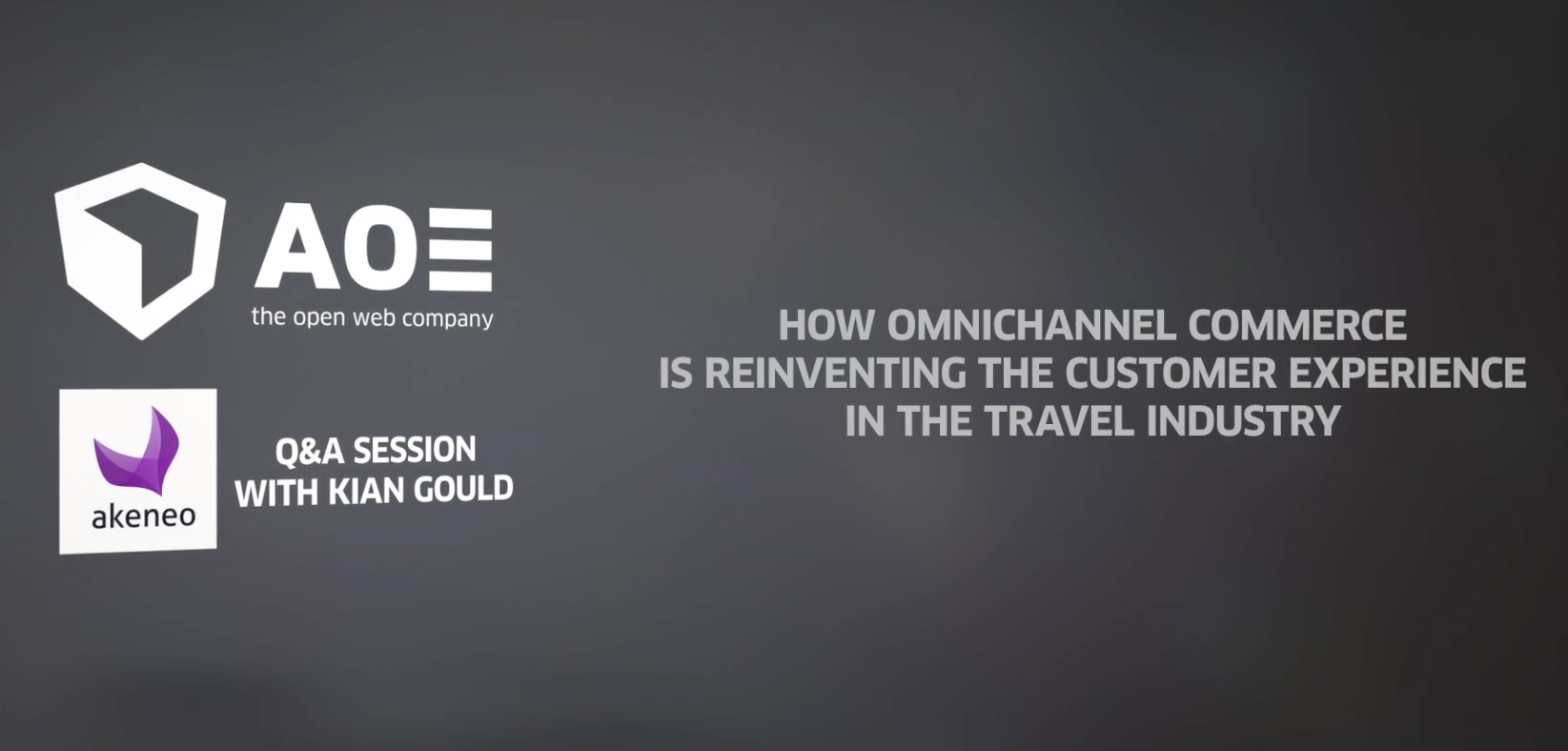How consumers shop for products in an omnichannel world is changing faster than ever. In particular, airport shopping has shifted as consumers can eas...

Keywords
How consumers shop for products in an omnichannel world is changing faster than ever. In particular, airport shopping has shifted as consumers can easily purchase products online and have them sent to their destination rather than having to make last minute and extra costly airport purchases. To combat this trend airports and airlines are starting to embrace the omnichannel trend to provide highly-customized digital experiences to their passengers.
Kian Gould, founder and CEO of AOE, explains this shopping shift and how they implemented Akeneo PIM to help manage the products of numerous retailers and ensure that customers are receiving one consistent user experience. For the complete story, check out the interview:
My name is Kian Gould. I’m the founder and CEO of AOE. And we have built a very high-scale omnichannel multi-merchant marketplace solution, that we call OM3. And it’s powering most of the world’s airport’s digital experiences – now and in the future.
So, the travel retail industry is really going through somewhat of a transformational phase. They’ve always relied a lot on impulse purchasing. And that is really going away now. More and more, we’re seeing spending per passenger drop. And of course, one of the reasons is that there’s such a vast amount of possibilities to purchase products digitally throughout their journey, whether it’s on Amazon or other channels. And so, the classic travel retail industry has started to suffer. A lot of airports, airlines, and also retailers are trying to combat that kind of disruption by providing real omnichannel digital experiences to their passengers.
The crucial thing about that is that, in travel retail, there’s generally much more of a possibility to know your customer because they are passengers, and they are flying. So you have more information on them. And that makes it possible to personalize, recommend, and build experiences that are much more catered to each of these passengers. Which is, of course, very different from a classic retail environment where you really have anonymous visitors coming into your store.
You always have to ask yourself the question, “Why does a person decide to shop through one channel versus another?” And what it comes down to, in our experience, is that it’s very much about this kind of microsecond decisions. Where it depends a lot on convenience, it depends a lot on pricing, it depends on how desperately I want a product at that moment.
This is really what we’re seeing that the customers are looking for. If a product is not available at that moment when they want it, they will not come back to check it at a later stage. If the product doesn’t have a good price now, they will not try to come back to check if it has a good price later. They will try to find another channel that has it at a better price. So, a lot of the importance in this channel is, that you’re really providing a value and that it’s accepted by these travelers to help them along their journey. Either through convenience or through an actual good value proposition, cost-wise.
So, what we’ve done, because we work for these big, massive airports that have a lot of different systems that have to be integrated. They have physical retail, they have physical food and beverage. They have a lot of channels that their customers use. Whether it’s the website or the app but very often it’s also third-party websites and apps that have to be fed that content.
We had to build a solution that is truly agnostic to where traffic comes from, where products come from, and where they’re fulfilled. So we built something that we call, OM3. The Omnichannel Multi-Merchant Marketplace Suite. And that basically enables these multi-retailer venues to take all of their products, all of their services, integrate them all into one solution and then provide it to the customer independent of what channel they’re using (even if it’s not their own channel). Through APIs, through voice APIs, we can integrate with virtually any channel that you can think of.
So, we’re now live at three airports around the world. Frankfurt was the first to embark on this journey. We then went live in Heathrow and in Auckland. We’re currently doing projects with several airports and major airlines around the world. This is not only a project, this is a new strategy and a new solution approach that we have taken with that. You’re going to see much more of that in the future of these kind omnichannel experiences, that are driven by passengers and multi-retailer venues.
One of the most challenging aspects of building this solution was that you have products coming from multiple retailers. They all have their own ERP, or POS, or PIM systems. The data and the attributes are not necessarily aligned. The big challenge is, how do you take all this data and then present it to the customer in a way that they can relate to it.
A simple example, one retailer could call a color black and the other one could call it noir. At that moment, you wouldn’t be able to match those two products in a certain category anymore. So, a lot of the work that has to be done, is to consolidate all that data. And then, make sure that independent of what the sources of the retailers, we can present it all to the customer in one common user experience.
In order to achieve that, we decided to use Akeneo as a PIM solution for all of the products. We had to then customize the solutions significantly because there are some very specific requirements in travel retail. Amongst them, is that every product comes with a certain concession fee that is paid by the retailer to the airport when it’s sold. Certain products are only allowed to be sold in certain volumes. Which are restrictions imposed by the brands. You cannot buy more than two Chanel Number Fives as one passenger, for example. There are restrictions on volumes of liquor. Then there are also restrictions on whether we can deliver one product from this terminal to another. Because one is domestic and one is an international terminal. Also, sometimes products sit in warehouses. One is a bonded warehouse, the other one is actually not a bonded warehouse. So all of that is functionality that had to be developed specifically inside of the PIM system. So that, we make sure that we never try to sell a product to a customer that we’re not allowed to, or that we cannot sell to them. That requires quite a sophisticated PIM solution and we integrated that seamlessly into our whole OM3 platform.
Check out the complete customer story of AOE and our Frankfurt Airport Project.

Kian T. Gould is the CEO and Founder of AOE, one of the leading global Omnichannel E-Commerce and Digital Transformation experts within the Open Source space. He is a regular speaker at many global conferences and a well-known expert in airport digitalization. For the past 15 years, his company AOE has assisted global Fortune 1000 companies with their Digital Transformation and Omnichannel E-Commerce strategies.
AOE is a leading global provider of services for digital transformation and digital business models. AOE relies exclusively on established Enterprise Open Source technologies. This leads to innovative solutions, digital products and portals in agile software projects, and helps build long-lasting, strategic partnerships with our customers. In our daily work, such diverse systems as PIM, CRM and E-Commerce are integrated.

Entdecken Sie die modernen Trends, die Black Friday und Cyber Monday-Strategien neu gestalten, und erfahren Sie, warum die Sicherstellung von...
Mehr lesen
Customer Experience ist der zentrale Begriff rund um die Weiterentwicklung und Digitalisierung von Marketing, Sales und Customer Service in...
Mehr lesen
Entdecken Sie die wichtigsten Erkenntnisse unserer kürzlich veröffentlichten Umfrage unter B2B-Branchenführern, die die Herausforderungen und...
Mehr lesen